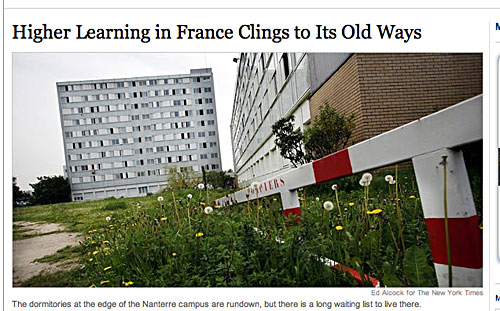Some users of MySpace feel as if their space is being invaded.
MySpace, the Web’s largest social network, has gradually been imposing limits on the software tools that users can embed in their pages, like music and video players that also deliver advertising or enable transactions.
At stake is the ability of MySpace, which is owned by the News Corporation, to ensure that it alone can commercially capitalize on its 90 million visitors each month.
But to some formerly enthusiastic MySpace users, the new restrictions hamper their abilities to design their pages and promote new projects.
“The reason why I am so bummed out about MySpace now is because recently they have been cutting down our freedom and taking away our rights slowly,” wrote Tila Tequila, a singer who is one of MySpace’s most popular and visible users, in a blog posting over the weekend. “MySpace will now only allow you to use ‘MySpace’ things.”
Ms. Tequila, born Tila Nguyen, has attracted attention by linking to more than 1.7 million friends on her MySpace page. To promote her first album, she recently added to her MySpace page a new music player and music store, called the Hoooka, created by Indie911, a Los Angeles-based start-up company.
Users listened to her music and played the accompanying videos 20,000 times over the weekend. But the Hoooka disappeared on Sunday after a MySpace founder, Tom Anderson, personally contacted Ms. Tequila to object, according to someone with direct knowledge of the dispute. She then vented her thoughts on her personal blog.
MySpace says that it will block these pieces of third-party software — also called widgets — when they lend themselves to violations of its terms of service, like the spread of pornography or copyrighted material. But it also objects to widgets that enable users to sell items or advertise without authorization, or without entering into a direct partnership with the company.
A MySpace spokeswoman said yesterday that the service did not remove anything from Ms. Tequila’s page. “A MySpace representative contacted her and told her that she had violated our terms of service in regards to commercial activity,” the spokeswoman said. “She removed the material herself, after realizing it was not appropriate for MySpace.”
Ms. Tequila and her representatives would not comment.
But Justin Goldberg, chief executive of Indie911, said MySpace’s actions undercut the notion that the social networks’ users have complete creative freedom. “We find it incredibly ironic and frustrating that a company that has built its assets on the back of its users is turning around and telling people they can’t do anything that violates terms of service,” he said.
“Why shouldn’t they call it FoxSpace? Or RupertSpace?” Mr. Goldberg said, referring to the News Corporation’s chief, Rupert Murdoch.

